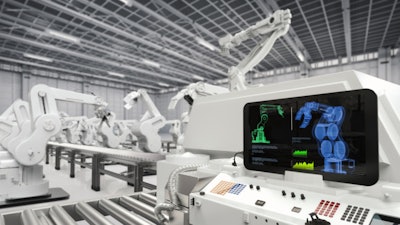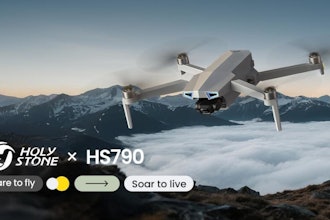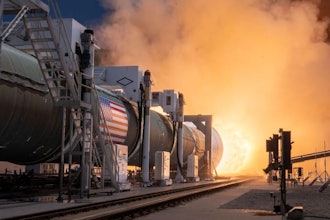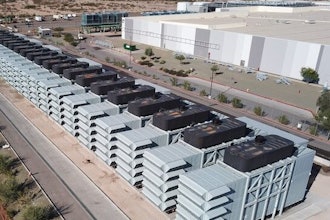
The Internet of Things (IoT) is still considered a cost saving strategy, rather than a revenue driver by industrial companies, so many are yet to realize its true value. Recent IFS research indicates that IoT investments focused on cost containment are being prioritized ahead of new revenue generation strategies. Although progress has been made with companies collecting IoT data and its use in both asset management and equipment monitoring, a majority are still taking tentative steps towards IoT adoption to transform their business models.
‘Rudimentary’ IoT has played a role in the manufacturing industry for some time. Networked programmable logic controllers (PLC) have been used to automate industrial processes and data from supervisory control and data acquisition (SCADA) systems have achieved greater plant floor management visibility. All of this is dependent on data from connected devices, resulting in an increasingly autonomous manufacturing environment.
Yet even in the manufacturing sector few companies are realizing the instant revenue generation potential which comes as a result of deploying IoT deeper into the business landscape. Data from connected devices can transform and ‘lean out’ a business by triggering events and transactions such as inventory re-orders, maintenance work orders and customer orders. This increased efficiency provides companies with the opportunity to leapfrog their competitors by significantly shortening timelines, enhancing the customer experience or creating new product and service lines that deliver new revenue.
There’s More to IoT Than Cost Savings
Primarily using IoT for cost reduction is a conservative strategy. Digital transformation is forward-looking and creative—the aim for companies should be to generate a net new business model, not just to gradually improve its current one. Real transformation necessitates visionary leadership combined with the technology and skill sets to execute on that vision.
In the construction industry for example, although they are seeing the highest, most immediate ROI potential in terms of increased safety, this still represents a cost avoidance mechanism. Every industry and every company will need to consider where an enterprise approach to IoT will drive a measurable return—this is where we will see the most rapid IoT adoption.
Leading enterprises may fund huge systems integration projects between IoT, SCADA and enterprise software with the goal of achieving enterprise-wide benefits from IoT. However, easily configured, commercial off-the-shelf solutions that connect data from connected devices to the enterprise have generally been slow to come to market.
A 2018 Bain & Company study revealed that prospective IoT adopters feel vendors have failed to limit the most significant barriers to IoT adoption. These include security, ease of integration with existing IT and operational technology systems, and unclear returns on investment. The research suggests customers have extended their expectations of when such use cases will reach scale in their organizations, and they are planning less extensive IoT implementations by 2020 than they were back in 2016.
Due to the broad range of PLC and SCADA systems, it is difficult to combine and consolidate these systems in a logical way with enterprise resource planning (ERP) software. A substantial gap therefore remains between connected devices and the transactional software used to run a business, and IoT can quickly become too complex, with systems integrators mapping multiple systems together. ERP software will increasingly need to provide streamlined approaches to overcome this challenge, or else it will be a constraint for companies intending to adopt transformational business models built around IoT data.
Understand How ERP and IoT Use Data
There are both logistical and technical barriers that prevent IoT and ERP from talking to each other. IoT typically creates data in a continuous stream. A sensor may send a record of conditions in a piece of equipment or component to a plant historian or SCADA system at any given time. ERP, however, requires data that describes a defined business event. That event may be an exception to ideal operations conditions, but it is finite and has a specific business meaning.
Project teams must define what data ERP should collect. They can then determine how an IoT discovery tool can convert the ‘stream-of-consciousness’ data style of IoT into something that informs ERP of business events and operations. This may include a particular piece of equipment that requires service, the need for a technician to visit a customer site, or that a production line should be slowed down to avoid quality issues.
It could be that we see two flurries of IoT investment moving forward. The first will focus on enabling more thorough and strategic data collection, the second on making more complete use of that data. Data collected on a customer’s equipment may at first enable a company to identify issues with them, but in the future could drive an automated field service value chain where the equipment sends its own work orders when required. In time these sensors will support servitized business models. Companies would be able to charge customers for productivity and outcomes—duty cycles, products manufactured and hours of operation—instead of a discrete product.
IoT is Coming – Don’t Wait
The shift towards strong IoT and enterprise systems interplay is inevitable. But successfully unlocking the productivity and ROI gains IoT brings will come down to a company’s ambition for connecting real-time data from connected devices, and ensuring the ERP system they run can create seamless, manageable pathways for IoT data to reach the core business systems where it will have the greatest impact. Only this way will IoT and ERP truly talk to each other and companies fully achieve the benefits beyond cost prevention.






















